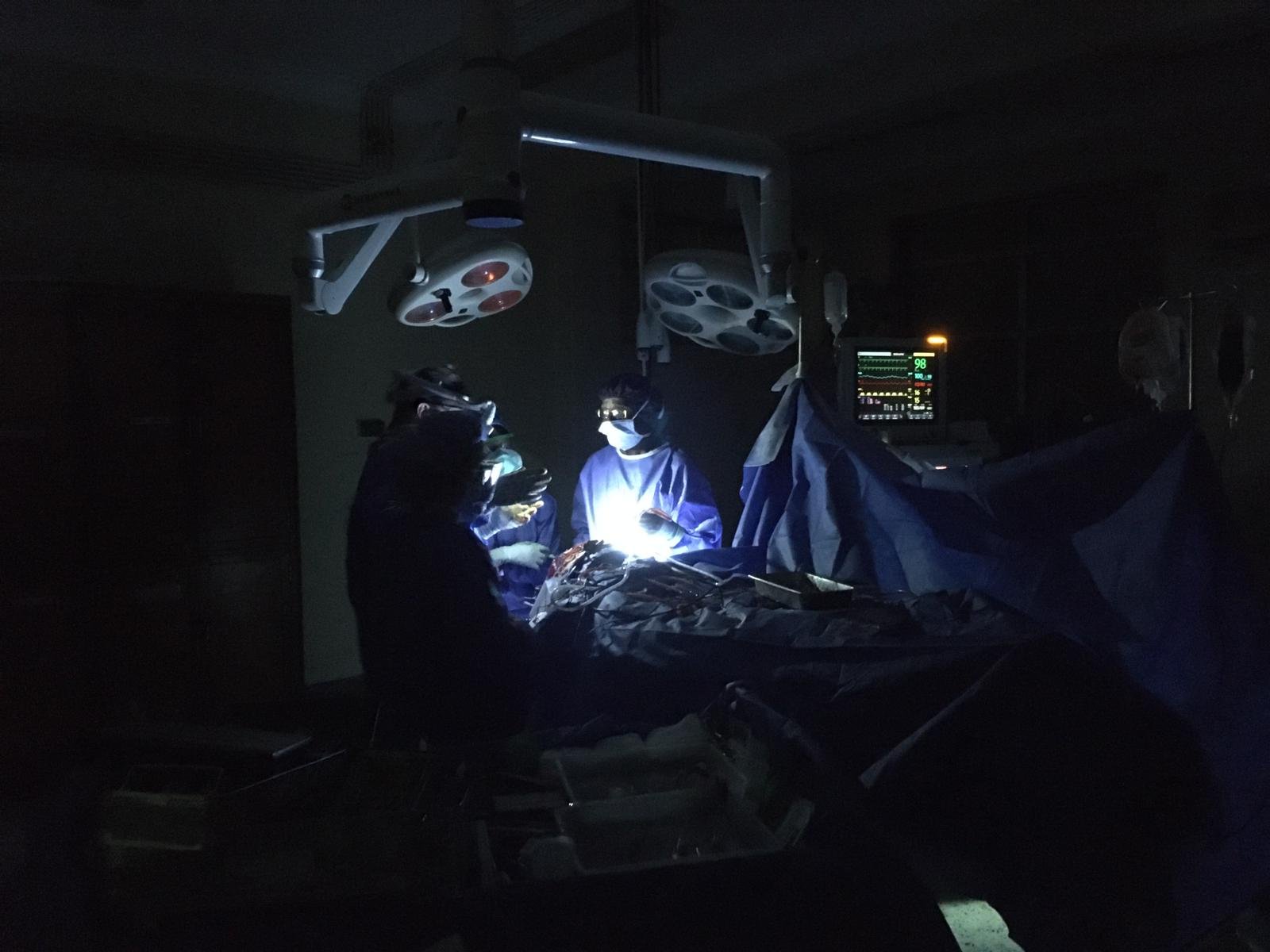
Neurosurgery Publications

Clinical Utility of Near-Infrared Device in Detecting Traumatic Intracranial Hemorrhage: A Pilot Study Toward Application as an Emergent Diagnostic Modality in a Low-Resource Setting
We report the largest study to date using a near-infrared device (NIRD) to detect traumatic intracranial bleeds.

Demographics, referral patterns, and outcome of patients with neural tube defects in southwestern Uganda
The authors sought to characterize the population of patients with NTDs, maternal characteristics, and referral patterns of these patients, and to quantify the burden of NTDs in southwestern Uganda.

Transnational Capacity Building Efforts in Global Neurosurgery: A Review and Analysis of Their Impact and Determinants of Success
This review sought to characterize neurosurgical capacity building efforts in low- and middle-income countries and the challenges they face and identify factors that predict higher engagement, better training, and performance of high-impact activities.

Outcomes at Discharge of Pediatric Traumatic Brain Injury (pTBI) in Western Uganda: a Prospective Cohort Study
This study aimed to describe pediatric TBI patients presenting to one regional referral hospital in Uganda and identify factors contributing to unfavorable outcomes.

Assessing the Success and Sustainability of Global Neurosurgery Collaborations: Systematic Review and Adaptation of the Framework for Assessment of InteRNational Surgical Success Criteria
The high unmet neurosurgical burden in low- and middle-income countries has necessitated multiple global neurosurgical collaborations. We identified and evaluated these collaborations and their peer-reviewed journal publications using a modified version of the Framework for Assessment of InteRNational Surgical Success (FAIRNeSS).

The Scope, Growth, and Inequities of the Global Neurosurgery Literature: A Bibliometric Analysis
We evaluate the evolution and growth of global neurosurgery publications over time, focusing on authors' contributions and impact in low- and middle-income countries (LMICs).

Fulfilling the specialist neurosurgical workforce needs in Africa: a systematic review and projection toward 2030
Africa contributes significantly to the global neurosurgical disease burden but has only 1% of the neurosurgery workforce. This study appraises Africa's neurosurgical workforce and training capacity and projects the workforce capacity by 2030.

Machine Learning for Predicting Discharge Disposition After Traumatic Brain Injury
To generate machine learning (ML) models with a strong predictive capacity for trichotomized discharge disposition, an outcome not previously used in TBI prognostic models. The outcome can be a proxy for patients' functional status, even in mild and moderate patients with TBI.

Machine Learning for Predicting In-Hospital Mortality After Traumatic Brain Injury in Both High-Income and Low- and Middle-Income Countries
To develop ML models to predict in-hospital mortality for both the high-income country (HIC) and the low- and middle-income country (LMIC) settings.

Deep Learning to Predict Traumatic Brain Injury Outcomes in the Low-Resource Setting
With the ultimate goal of enhancing TBI triage in LMICs, we aim to develop the first deep-learning model to predict outcomes after TBI and compare its performance with that of less complex algorithms.

CRASH and IMPACT in Traumatic Brain Injury Models Compared with a Machine Learning-Based Predictive Model from Tanzania
We aim to externally validate CRASH and IMPACT on our TBI registry and compare their performances to that of the locally derived model (from the Kilimanjaro Christian Medical Center [KCMC]).

The Role of Nonprofit and Academic Institutions in Global Neurosurgery
In this chapter, we explore the history, current work, and future directions for nonprofit and academic institutions in global neurosurgery. While we have tried to be holistic, we have undoubtedly left out efforts that deserve to be mentioned. Thus, this chapter is not meant to capture every example of the amazing work done worldwide; rather, the examples are pulled by the authors to illustrate the key points.

The Importance of Collaboration in Global Neurosurgery
Over the past two decades, our Duke Global Neurosurgery and Neurology (DGNN) team has strived to live up to these ideals. We are constantly adapting and evolving our collaborative approach.

Surgical intervention and patient factors associated with poor outcomes in patients with traumatic brain injury at a tertiary care hospital in Uganda
The purpose of this study was to investigate whether neurosurgical intervention for traumatic brain injury (TBI) is associated with reduced risks of death and clinical deterioration in a low-income country with a relatively high neurosurgical capacity. The authors further aimed to assess whether the association between surgical intervention and acute poor outcomes differs according to TBI severity and various patient factors.

Predicting the Individual Treatment Effect of Neurosurgery for Patients with Traumatic Brain Injury in the Low-Resource Setting: A Machine Learning Approach in Uganda
Traumatic brain injury (TBI) disproportionately affects low- and middle-income countries (LMICs). In these low-resource settings, effective triage of patients with TBI-including the decision of whether or not to perform neurosurgery-is critical in optimizing patient outcomes and healthcare resource utilization.

Influence of Caretakers' Health Literacy on Delays to Traumatic Brain Injury Care in Uganda
This study seeks to determine the factors that impact TBI patient caretakers' health literacy and examine how these factors influence delays in care.

Long-term follow-up of neurosurgical outcomes for adult patients in Uganda with traumatic brain injury
Using a scalable phone-centered survey, this study attempted to investigate factors associated with both mortality and quality of life in Ugandan patients with TBI.

Global neurosurgery: a scoping review detailing the current state of international neurosurgical outreach
This scoping review aims to characterize the field of global neurosurgery by identifying partnerships between high-income countries (HICs) and low- and/or middle-income countries (LMICs) that seek to increase neurosurgical capacity.

An Attitude Survey and Assessment of the Feasibility, Acceptability, and Usability of a Traumatic Brain Injury Decision Support Tool in Uganda
We previously developed a prognostic model and Web-based application for in-hospital TBI care in low-resource settings. In this study, we tested the feasibility, acceptability, and usability of the application with potential end-users.

Estimating prognosis for traumatic brain injury patients in a low-resource setting: how do providers compare to the CRASH risk calculator?
The authors' current study objective was to better understand in-hospital decision-making for TBI patients and determine whether data from the CRASH risk calculator influenced provider assessment of prognosis.